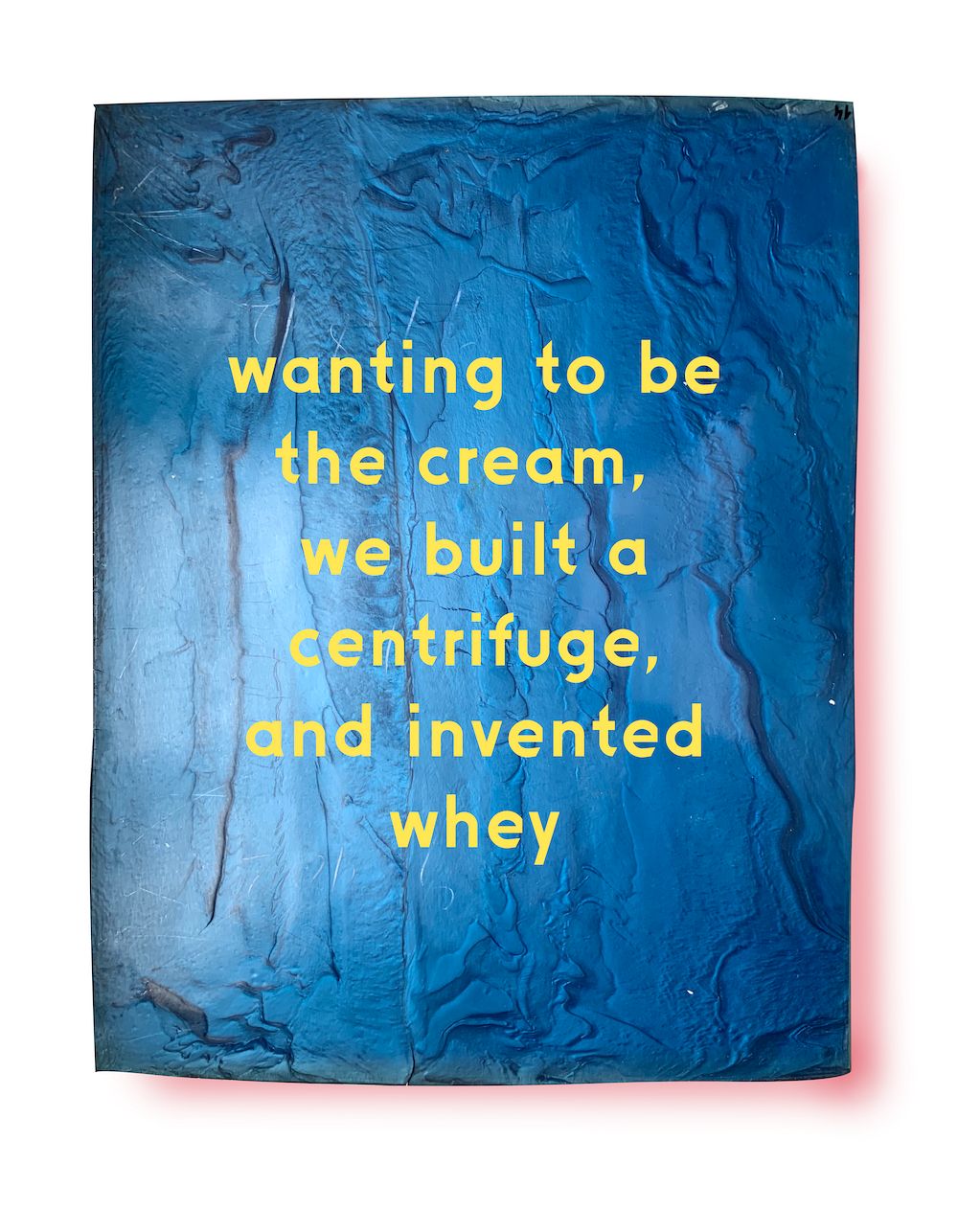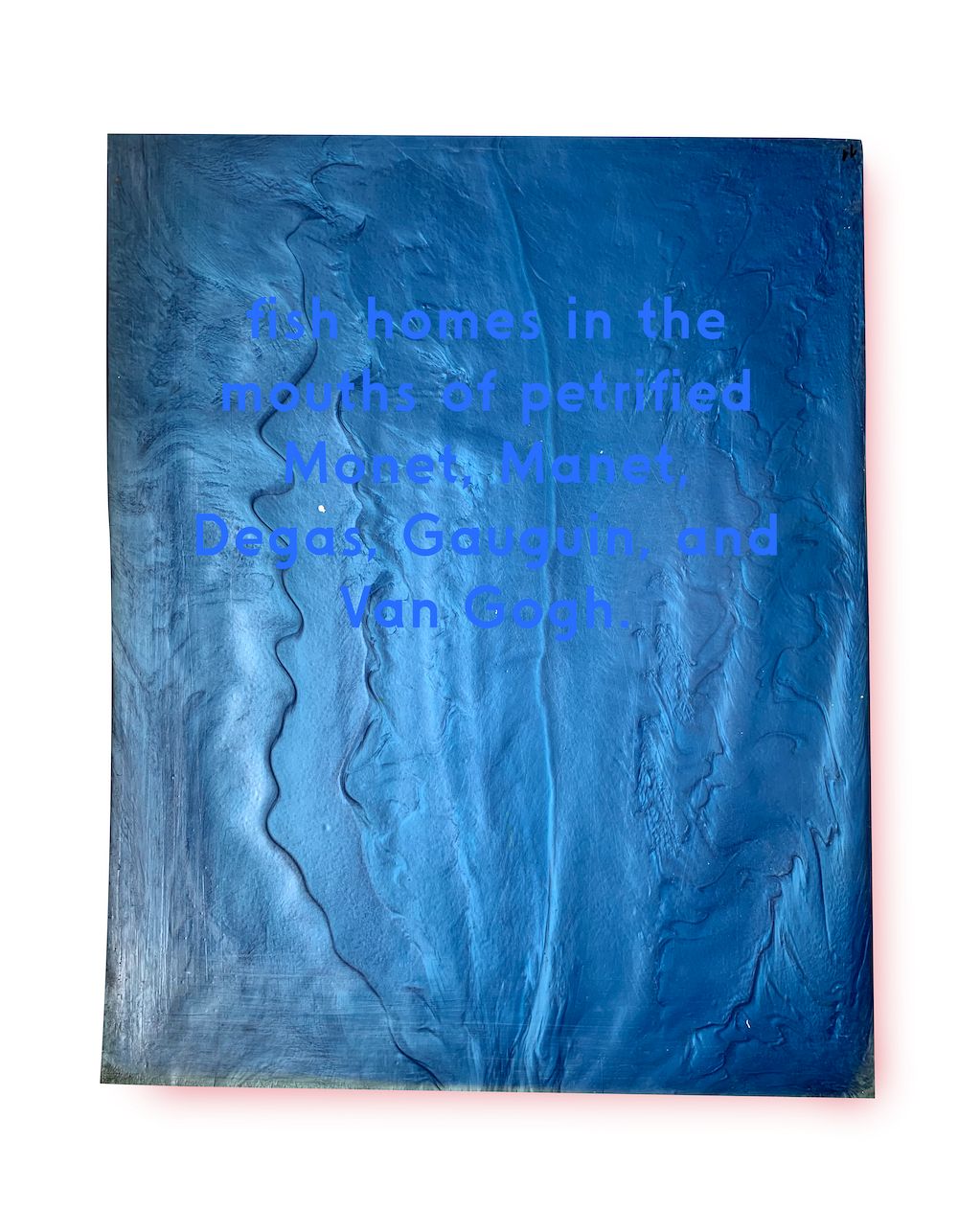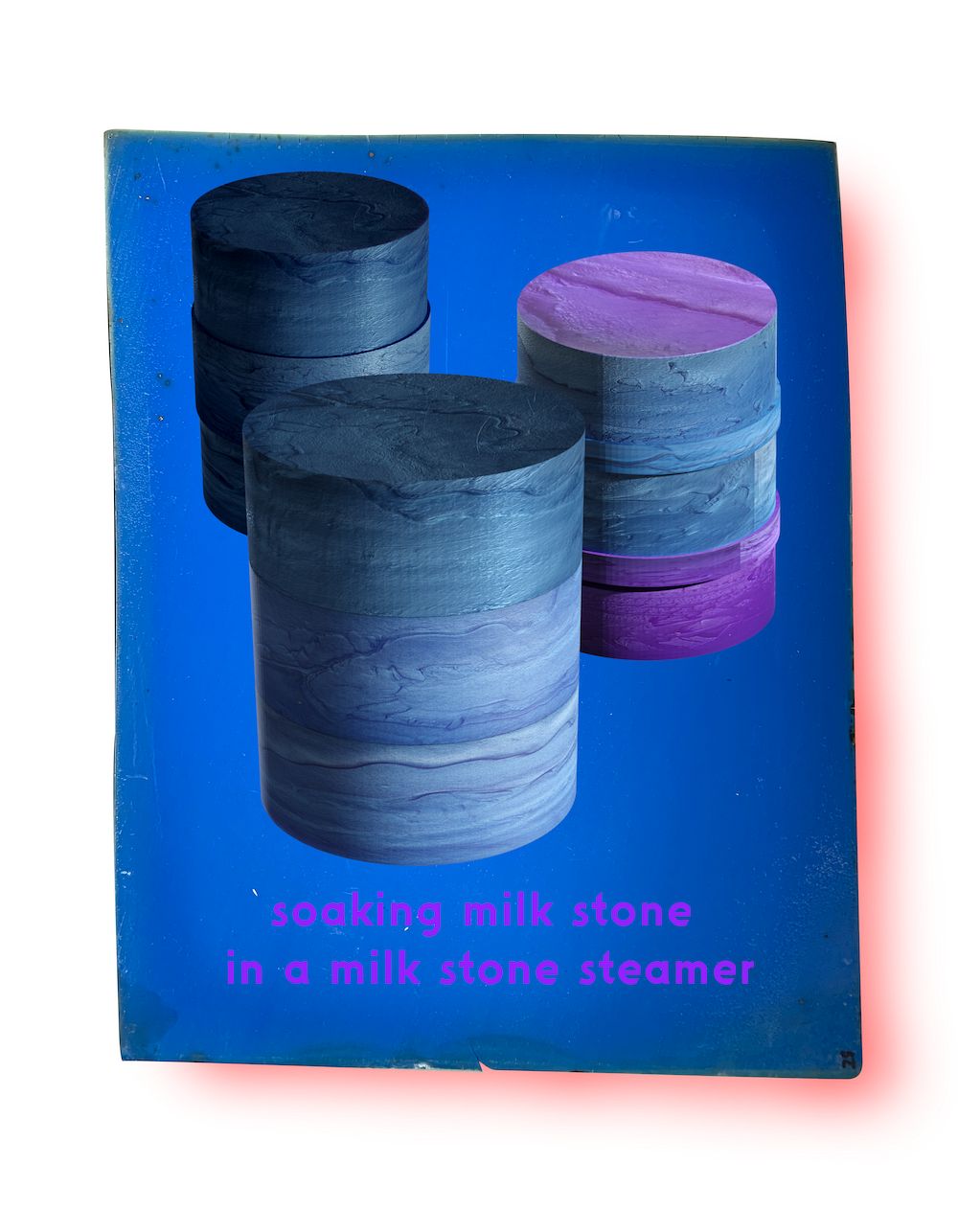
Milky Way
A: My invisible soul, my wireless connection. On John Paul 2nd street, police are beating kids to protect religious symbols. Dissappearing technology, transparent FlexiCuffs, invisible headquarters. Heaven is having no body, and I’m ranting on an invisibly connected phone.
B: How do I avoid the urge to slander catholic symbols – whose body gets to be invisible, and whose is imprisoned? All this talk of pure identities, disappearing footprints, a Milky Way bar has less micro-plastics than my spit.
A: “The eye in the sky is standing on its own puke.”
B: Resources with no qualities, disappearing garbage, me telling you about having extracted nothing on a screen from outer space. Can we have one more kind of imagination? I don’t need the glossy rim to feel/know that all people are on a spectrum.
B: Galalith, casein polymer, milk stone, or petrified milk. An unlikely intersection of milk, plastics and sculpture. Maybe the most beautiful human-made material, the most hypnotic craft, but also the pinnacle of a vicious industry, a vicous imagination.
A: Can I please have one more kind? Petrified milk is the least stable of plastic materials – it continuously curves and bends, warps with changes in humidity, until it splits… as if designed to micro-pollute. Steambath Earth. Make way for the sea urchin!
B: Problematic materials for problematic cartographies, impure strategies for an impure environment. I dream of a break with the past, but since milk stone has been breaking itself – a warpy, milky, hopeful preservation is in order. Soaking modernism. A Transnational Symposium in Steaming and Soaking. Let cutting and drilling rest. Things and conversations coming together without glue.
C: Petrified milk was produced to replace slate as blackboards for schools. Despite their flair, I treat them as such – tablets for makeshift lessons, plans and notes, and backgrounds for demonstrations. Cleaned up, polished and buffed since that past is still now.
C: To start, a Slavic ritual in tying knots on a rope. Even back then, it didn’t matter what the rope was made of. Forty knots in forty days, and then undone. So I’m researching for the smoothest knot.



THESIS
Melkweg
At a moment when Polish politics are becoming dangerously circular, and oppressive religious symbolism is again terrorising people into zombiefied genders, Melkweg follows the unlikely story of a 1930s Polish factory which made synthetic wool from milk.
Tracing the cash flows and personnel, I found a continent-wide network concentrated on siphoning milk. The resulting plastics offer a truly delusional view of the second world war. The armies involved were competing for milk, as they do today for oil, in order to produce army uniforms for the German, Italian and Japanese armies, leaders’ tuxedoes, party banners, and mass fashion.
Throughout the war, this adventure was being bankrolled by an English textile cartel. This was Courtaulds Ltd – owned by a much celebrated art collector, founder of the world-famous Courtauld Art Gallery for impressionism, and Courtauld Art Institute, currently the most prestigious MA for curators in the UK. Despite having made his fortune on autarky, the owner of this company is a much celebrated figure in England to this day. The gallery even hosts government events, including the astonishingly circular Courtauld 2025 Milk Initiative, which is tasked with saving milk from waste.
In terms of current affairs, the thesis reads into the history of milk propaganda in intersectional feminist fashion. It traces fascism’s aesthetics over several historical crises – starting with a religious cult in early Rome, through Decorative Dairies around the time of the French Revolution, the gendering of factories in modernist Italy, and racist state subsidies for the dairy industry in 1940s America, and finally, many American mothers today – sacrificing time spent with their newborns in order to pump into a machine. Each time, the oppression of women coincides with systemic manouvers around milk, used either to wash blood off the sacrificial knife, make cheese, switch to baby formula, or make plastics – the ultimate material we can't live without.
Considering how repetitive Courtauld’s preoccupation with milk is, might this be a good moment for these institutions to change their patron? What kind of artistic presssure might be needed for them to fund feminist action in countries undergoing the right-wing turn today, this time before it’s too late? What does milkmailing curators mean, and can it be effective?